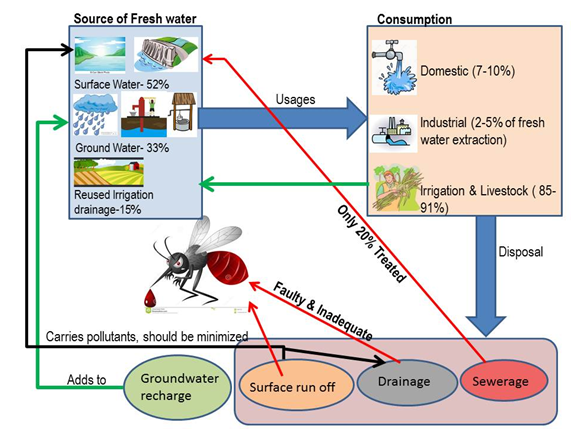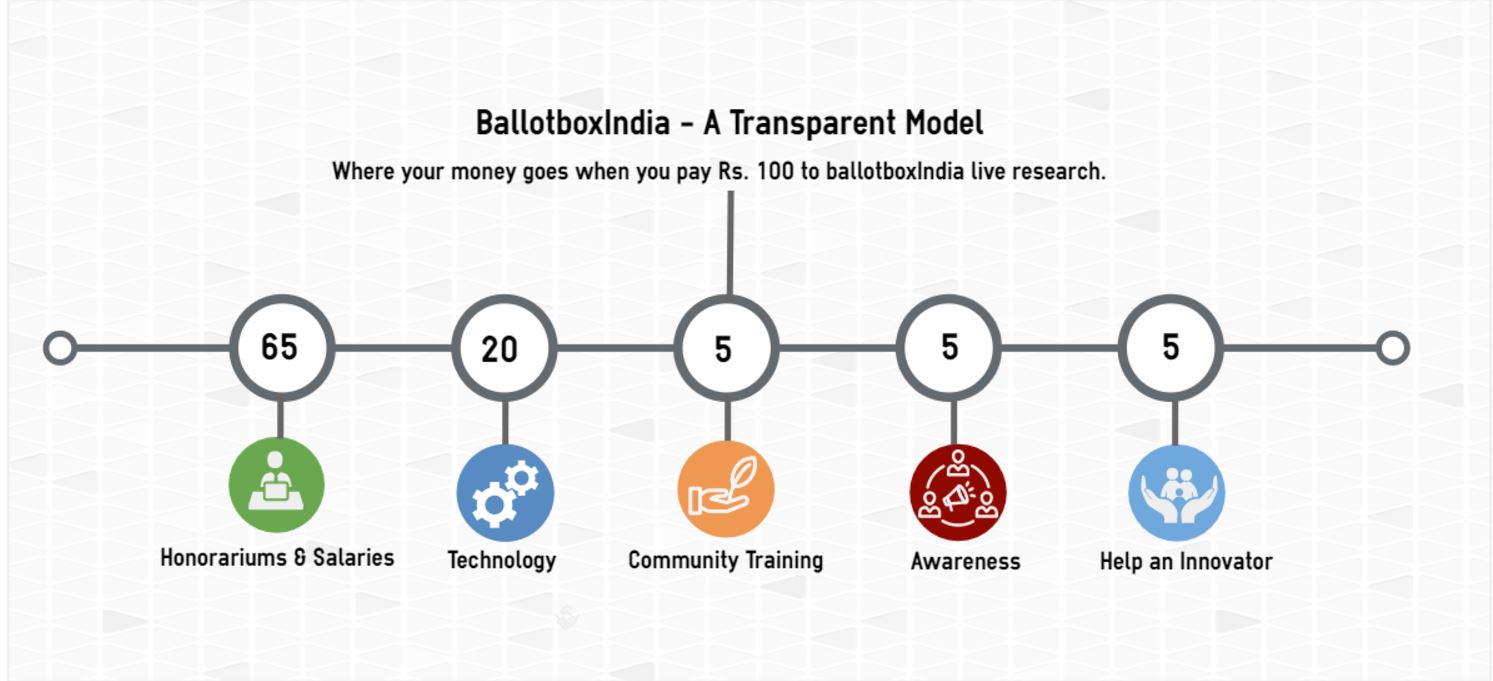Dengue, Chikungunya, Swine flu seasons in India. Well bluntly put we didn't hear about them growing up.
Yes we used to get sick but no recurring epidemic. Now we have Swine Flu (H1NI and variants) followed by Dengue and Chikungunya and its variant and in between we have typhoid, jaundice, infection and the list is long across India.
Now there are at least 6 months in India when television ads start asking us to douse us and our kids with chemicals. Hospitals flooded with patients and news of deaths.
Reports are suggesting, the viruses are mutating as their general course (Western Labs mostly, but ICMR still researching and to put related guidelines on antibiotics usage).
Now a few facts.
1. India is a highly dense country mountain to coast, and then coast to coast.
2. India has easy access to
antibiotics, which is not documented or tracked under a regulated system like
the West, where it's heavily tracked and documented per patient.
3. Due to lack of proper
medical facilities accessible to everyone and lack of awareness, antibiotics
are not used as should be i.e. partial course depletes resistance. Which makes
fighting infections during Swine Flu, Dengue and variants difficult.
Why India is a fertile ground for epidemics right now and people less able to fight back.
First and foremost Its a man made disaster being created over decades, and will keep taking worse shapes if interventions are not done in time.
Many reasons are clearly connected like, stagnant water, tropical conditions, breeding grounds of mosquitoes. But there are many stronger reasons playing their role in the background, including bad drainage and sewerage systems, over usage of antibiotics, India's now subverted food chain, and worsening public health and heath care (preventive and curative) in general.
Urban planning or the lack of it.
Urban and regional plans decide how the citizens live, play, commute, work and interact among themselves. It also decides how they interact with their ecosystem as in the roads, streets, neighborhood or environment. This interaction has an enormous impact on peoples’ physiological and psychological well being, possibly the single largest determinant of the upkeep of Public health.
The Hindu growth rate of the decades of 50’s to 90’s in our country resulted in sluggish urbanization as compared to other Asian countries. The overall lack of attention over urban India in terms of its infrastructure uplift, ensured that the majority of urban citizens would live in sub standard living conditions, without access to treated water supply, piped drainage, consistent power supply and decent community facilities.
The sluggish urbanization
effected in the last century have two very visible impact on Indian cities-
One, Urban infrastructure
kept way behind the curve as compared to developed cities.
Two, We could never set a
paradigm for our cities to measure up to.
Data and Stats on India's drainage, sewerage and piped water facilities-
As per the census 2011, at country level, 82% of households are NOT connected to covered Drainage system.
- 88% houses are not connected to piped sewerage system, with 53% with no latrine facility within premise.
- The bulk of sewage treatment capacity exists in the metropolitan cities, with 40% of waste water generation. The cities of Delhi and Mumbai generate some 17% of all the sewage in the country.
- Nearly 80% of the sewage generated in India flows untreated into its rivers, lakes and ponds, turning the water sources too polluted to use. The end result: groundwater in almost the entire country has nitrate levels higher than the prescribed levels - a result of sewage leaking into India's groundwater aquifers.
- Only four cities - Pune, Chennai, Surat and Gurgaon - claim to connect more than 50% of the population through a network of closed drains. In most cities, the sewage simply mixes into the open drains and storm water drains, polluting water sources.
- Almost 40% of the total sewage treatment capacity of the country exists in just two cities - Delhi and Mumbai.
- Class I and II towns - which are expected to grow and absorb most of the migration in the coming years — are faring the worst. Untreated sewage flowing into water bodies has almost doubled from around 12,000 million liter per day to 24,000 million liter per day in Class I and II towns.
There are 302 Tier one and 467 Tier two Cities with zero STP (Sewerage treatment Plants) facilities.
Of the 21% of sewage passing though treatment plants in B towns, only 60% really meets the required standards.
Overall, this means that just about 12% of sewage generated in Class I cities and Class II towns meet the standards.
These dismal figures tell the story behind why our natural water bodies are under so much stress, with sewerage going into natural drainage and water bodies with impunity.
And government machinery defeated to such an extent that its giving bread and circus to the population instead of even trying to fix the real problem.
Water Cycle below holds the key of epidemic and its impact due to weakening population.
The recent outbreak of
Dengue is a relevant example of how public health gets negatively affected by
inadequate planning.
Still water, the breeding bed of mosquitoes, in our cities, is a very small component of the entire water life-cycle.
Disposal of used water requires an
efficient drainage system in place that covers the entire population.
Even
a fraction of population if left un-served by this system may cause the rest to
fail.
The inclusive planning is
what has always been required for a sound public health scenario. Even our best
examples of urbanization have failed to have an inclusive approach towards
urban planning.
The whole Delhi NCR is dotted with urban villages stuck like mud islands within the glittering city precincts, denied of most of the basic urban amenities. These pockets are rich breeding ground for everything that stands against sound public health conditions.
The green cost that we pay
for this pile of shortcomings in the urban infrastructure, is the multiplication
of bad urban governance and the opportunity cost of losing out on public
health.
Cities should be perceived
as living organisms wherein the Waste even though residing within the body with
all its intrinsic toxicity, never intersects with the organism’s front end
activities. The issues of waste disposal in our cities require a much more
holistic solution, considering its gravity.
The following basic measures need to be immediately ensured to maintain the general public hygiene-
Rain water runoff, sewerage and drainage management.
- Open drains are supposed to carry only the Storm water. Only the rural areas may be allowed to carry grey water in open drains. We are permitting effluent to mix with storm water which consequently gets either into our rivers or into the ground water. Almost half of the urban Indian population still depends upon groundwater sources for drinking, cooking and bathing which puts them at direct risk from the polluted water.
- The open drains for storm water need to have slope, grating or covering and junctions adhering to best of the Standards.
- Ensuring 100% piped drainage connectivity in all the cities. Such projects have often been funded by entities like World bank or IMF in the past. Launching more of Infrastructure bonds, that will be bought by the people. Improved infrastructure would yield their pay offs in a stipulated time.
- The sewage network must not intersect with storm water at any point. Far too many of our STP’s have been damaged due to sewage mixing with rain water. Septic tanks or Sulabh model work reasonably only for rural areas.
- The streets are hugely lacking properly designed rain water drain system. This is causing rain water getting deposited into low lying areas until they get dried up in Sun. Lack of rain water drainage also cause massive surface run offs that is a source of serious pollution.
Solid Waste Management-
- Segregation of solid waste is very critical for recycling. The City’s governance and other agencies should make the segregation of solid waste at individual house/building level a mass movement. We can propose to even deny collection of solid waste if they have not been duly segregated, followed by heavy fines as done in western countries.
- Instead of the selfie model of clean India a regional plan should be devised on waste disposal based on data on waste generation, type of waste generation and best practices of disposal.
- Plans, budget and results should be made public for further interventions and course correction.
Piped water facilities
Piped water facility to homes should be made a high priority, right now dependency on tankers or ground water, apart from being disastrous environmentally and economically, is a major concern since decades behind falling citizen health.
We need to find out where water comes from in our community, and what are practices behind it and who is responsible to first get it and then improve it.
Preventive and Curative Care
Prevention is the easiest part any municipal department can do, only if they have a dedicated department for it. Municipal officials know their area and parts which are health hazards, but are they prepared, manned and trained to take these steps?
The problem is so massive that India depends on curative aspect a lot, pump a lot of antibiotics and it will be all right. This has been proven as a wrong strategy. Antibiotics not just weaken body's own defense, improper use makes super-bugs and mutated pathogens. Weak body and evolving pathogens is the deadly cocktail of destruction our communities are sitting on.
Let’s stay away from Leapfrog development. Let’s build and fix our cities with much deliberated carrying capacity and innovative local ideas so as to curb the menace of seasonal epidemic.
Our Aim -
In the community we live, we need to look at this problem in totality. Its not just about Dengue or Chikungunya which follow every rain or monsoon but starts with bad drainage and waste management, which stems from encroachments or bad planning, unavailability of basic facilities and regulations. The effects multiplies when our medical system fails in not only curative measures, but preventive measures, our over and unregulated usage of antibiotics which is helping these strains mutate. Our general population getting weaker by subversion in food chain, quality of drinking water in the absence of piped water. All these and a lot more are connected and systemic.
Future course of action -
In every part of the India issues are so intricately complex, it needs a closer look by subject experts. We are putting teams together anywhere we can reach, but if you think, you can make a difference join ballotboxindia as a coordinator.
Who can be a coordinator ?
Anyone, proven expert, or someone with a zeal to analyze the problem and find solutions in a scientific manner. Has a non confrontational approach. So may be an activist, mother, student, scholar, doctors, lawers, who can set aside a few hours a week to help their communities.
Are Coordinators Funded for their efforts?
Yes. BallotboxIndia is about bringing back the culture of detailed deliberations and research. We follow a tedious systematic approach and are actions and output based. To sustain such efforts the time and efforts spent has to be valued and incentivized.
I can't add value for this particular effort but been active for common good or want to work for better communities ?
Send in your details to innovators@ballotboxindia.com and we will get back to you as soon as possible.
Thanks
Ballot Box India Team.
 tag on profile.
tag on profile.






